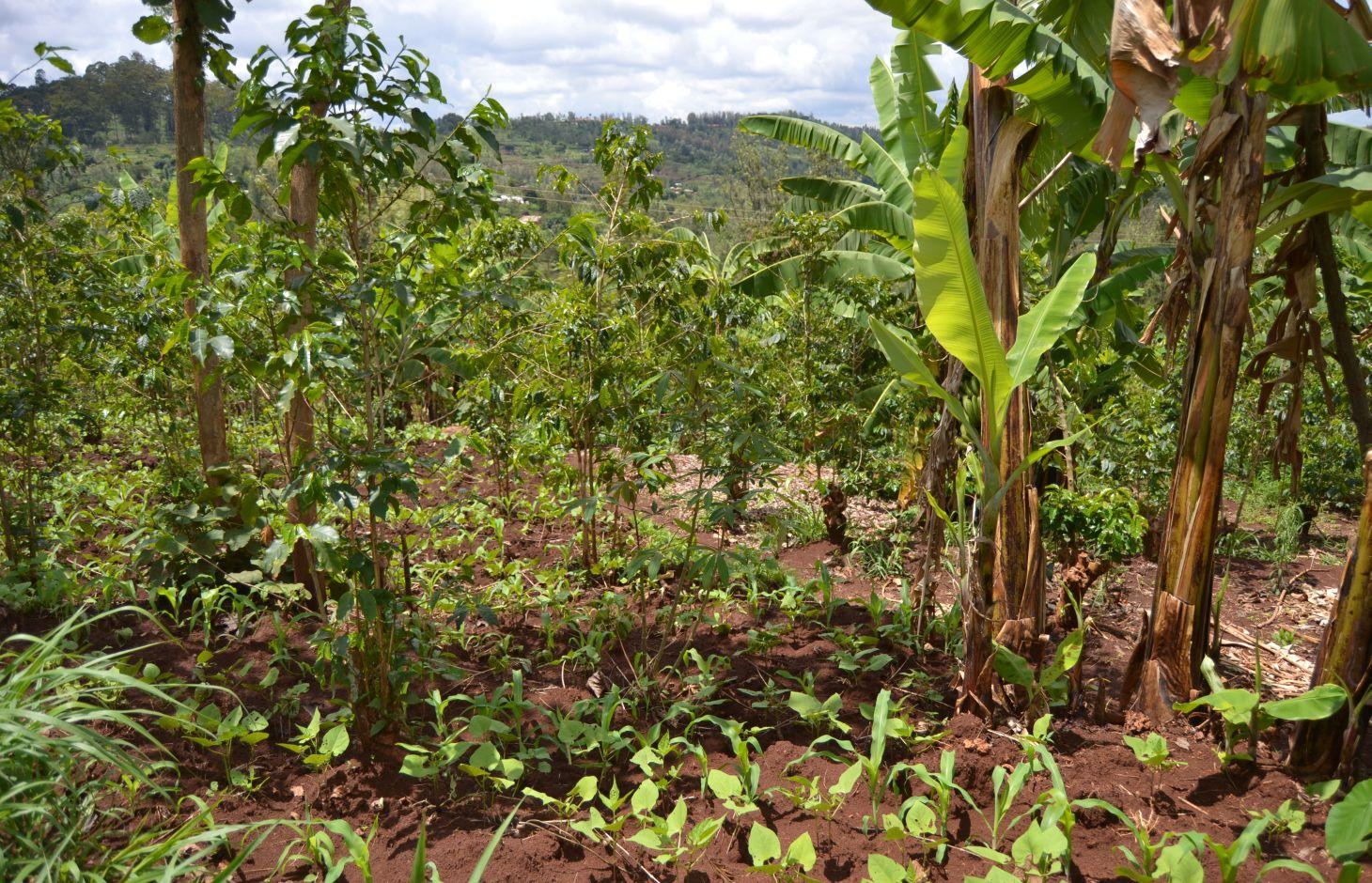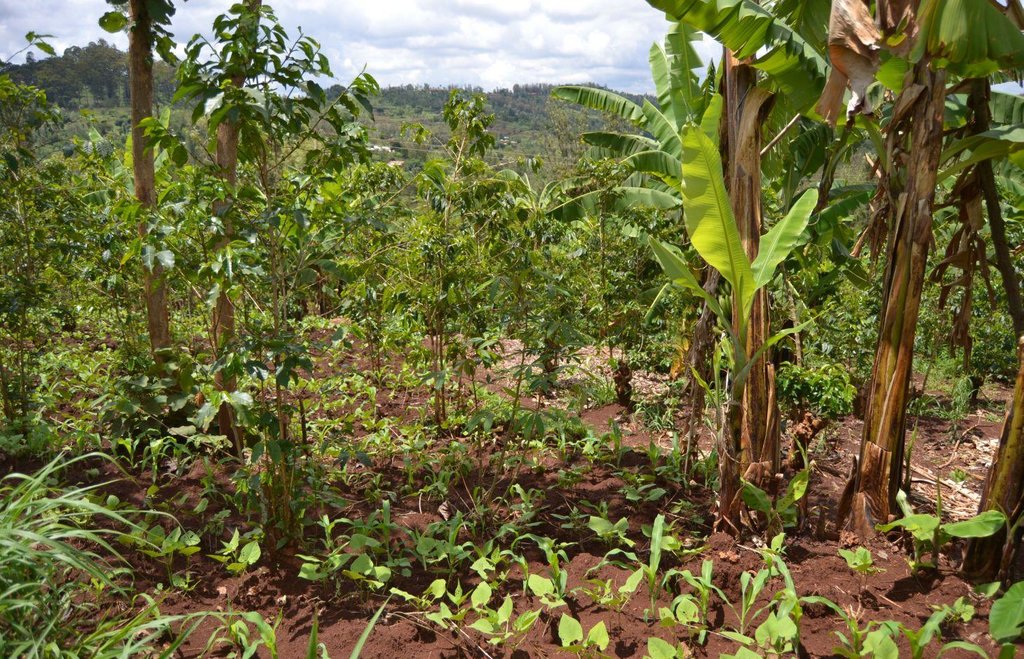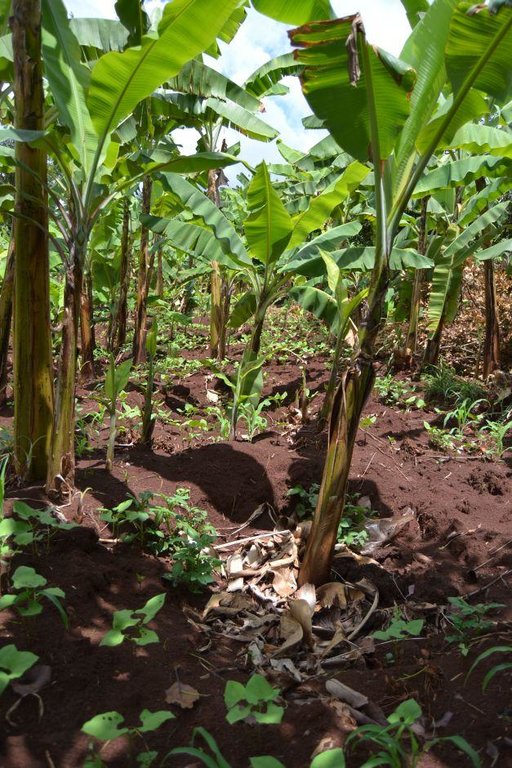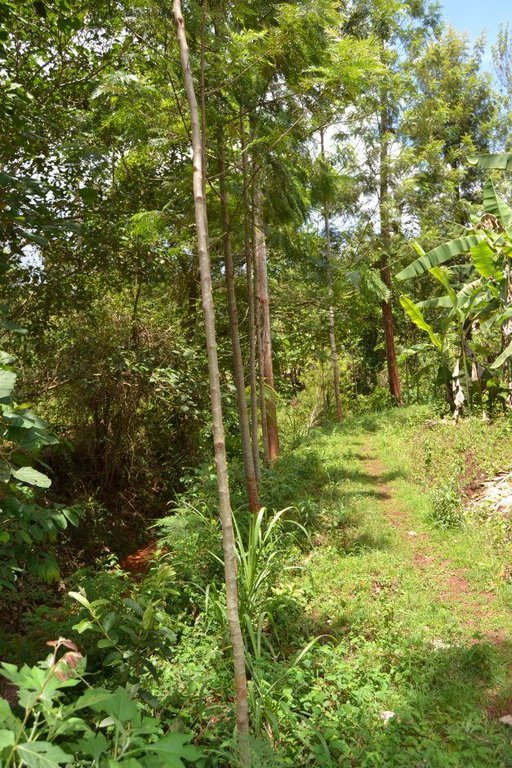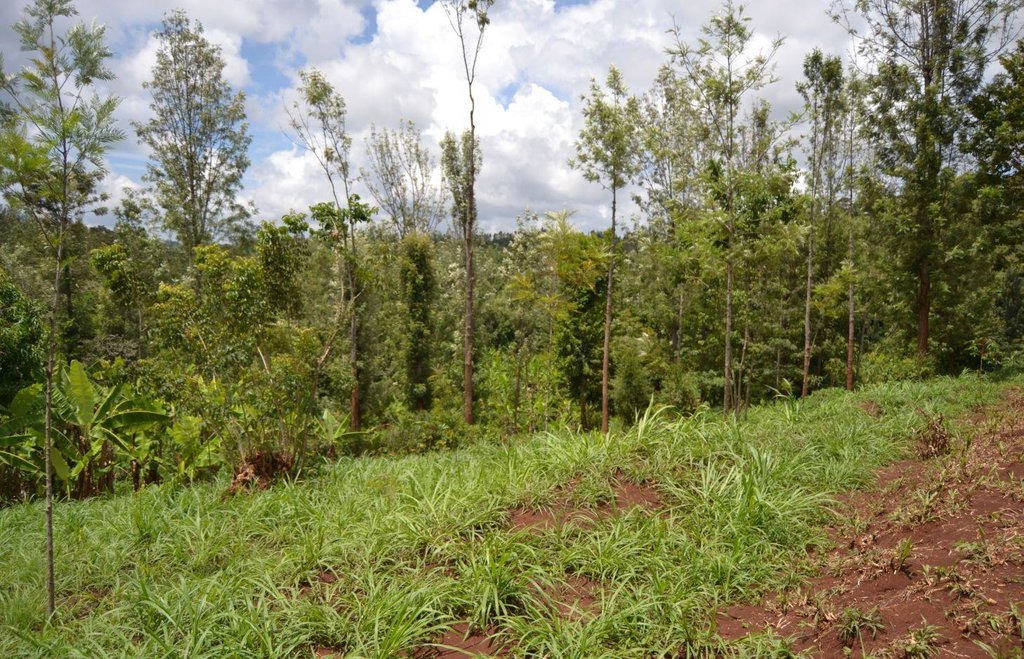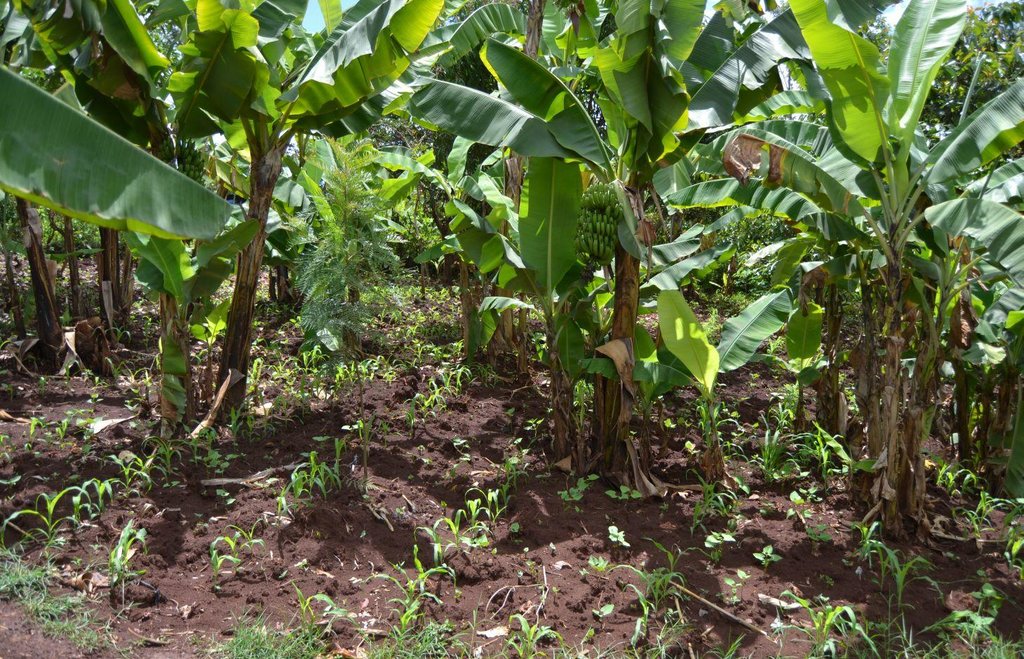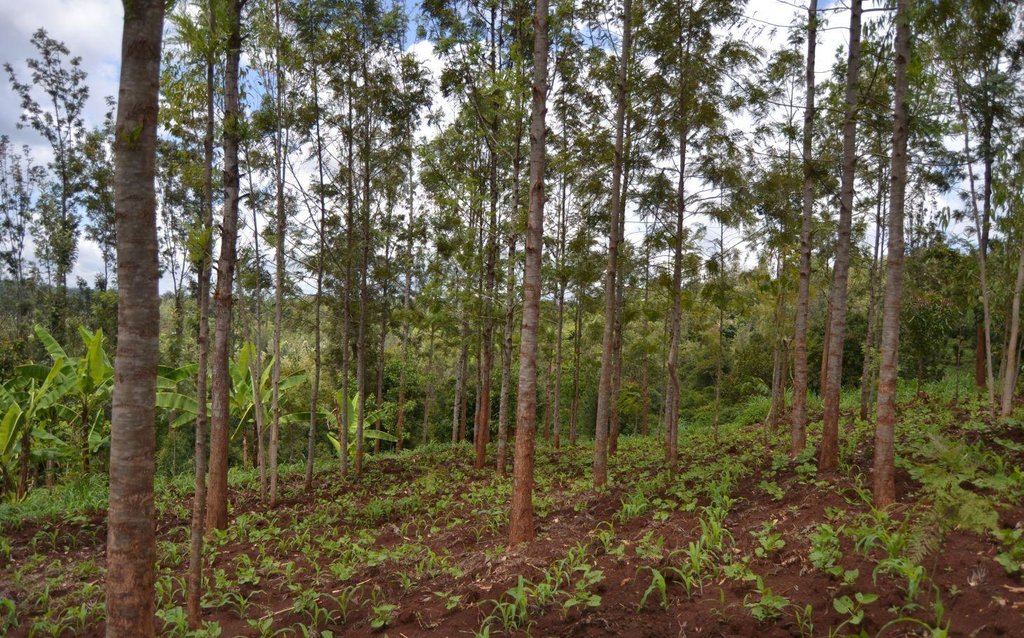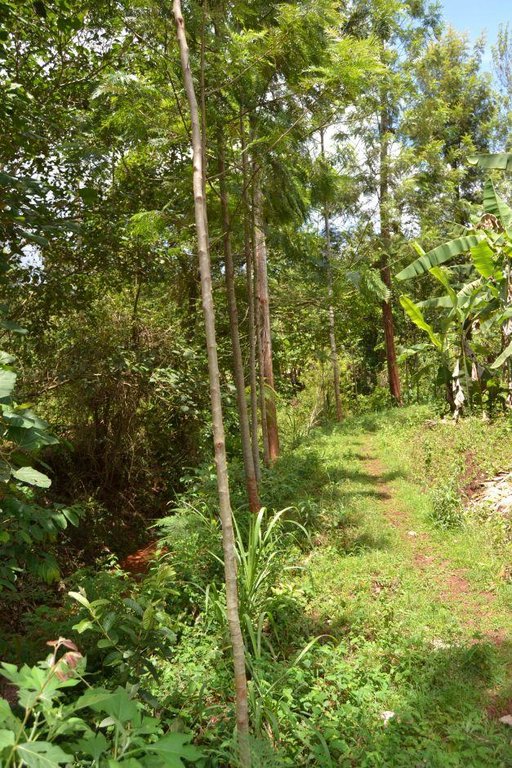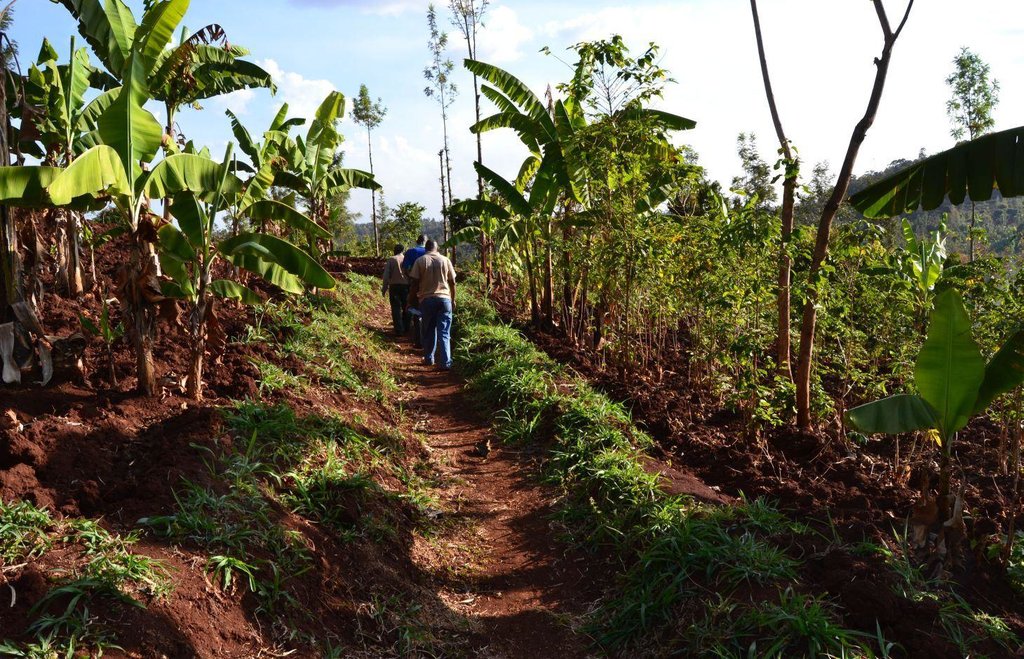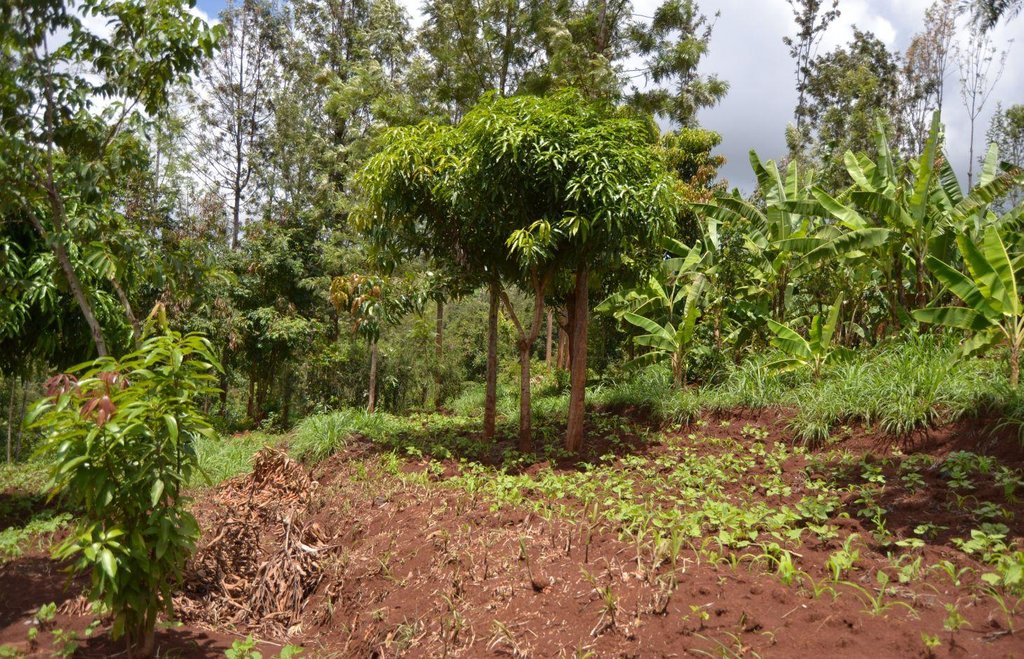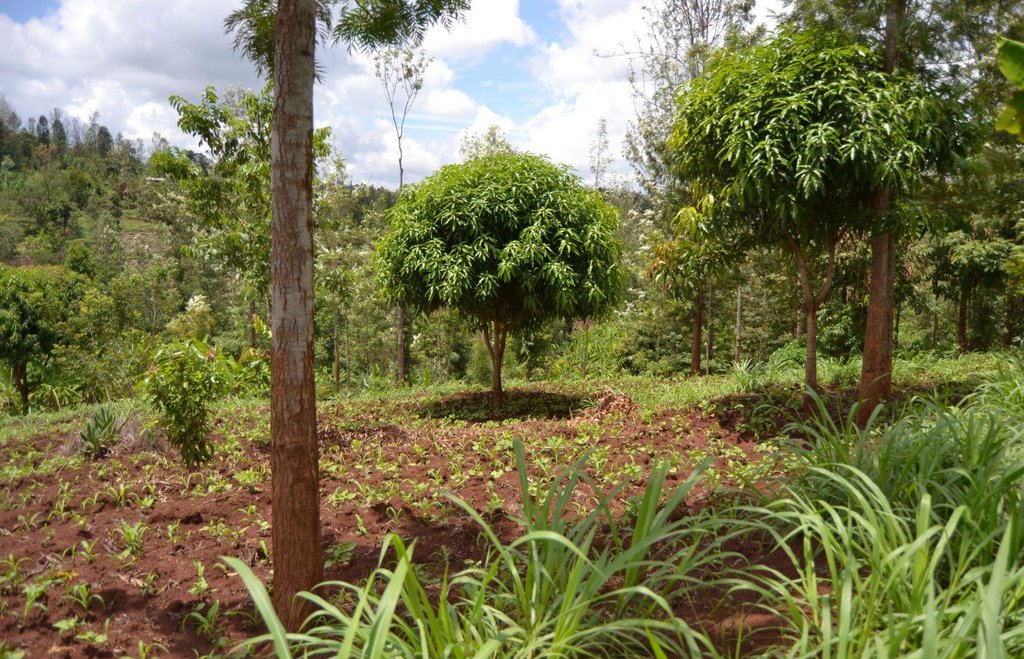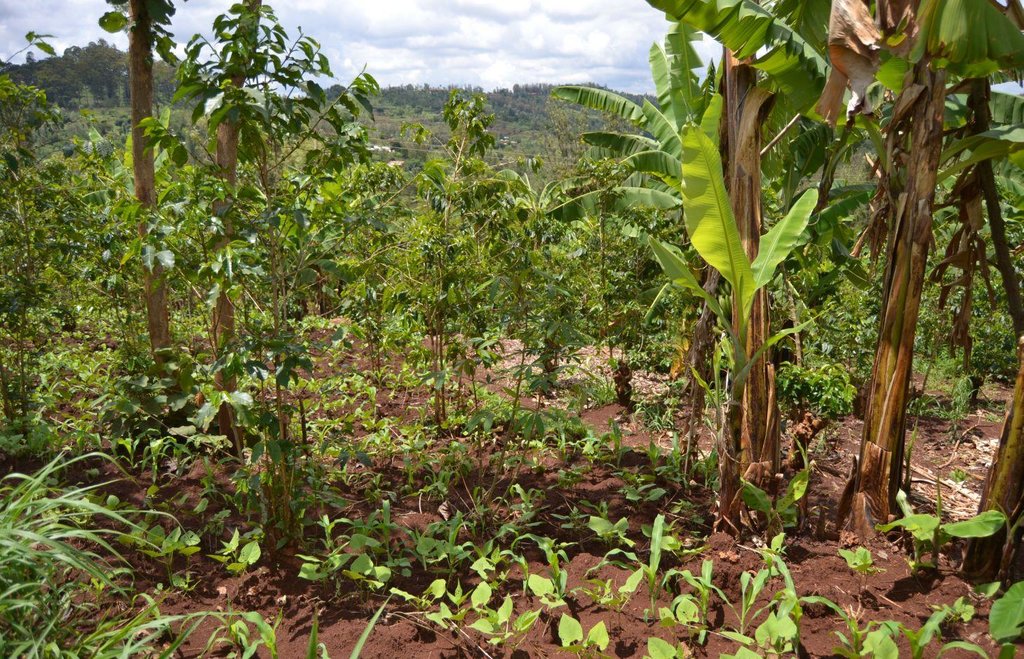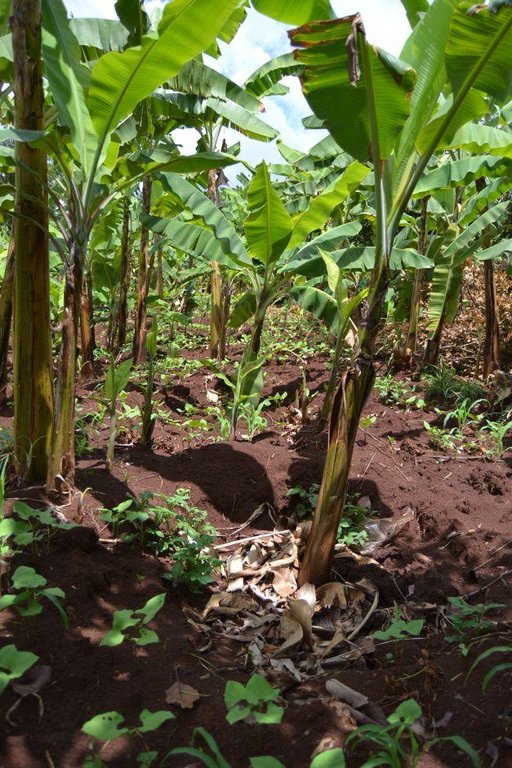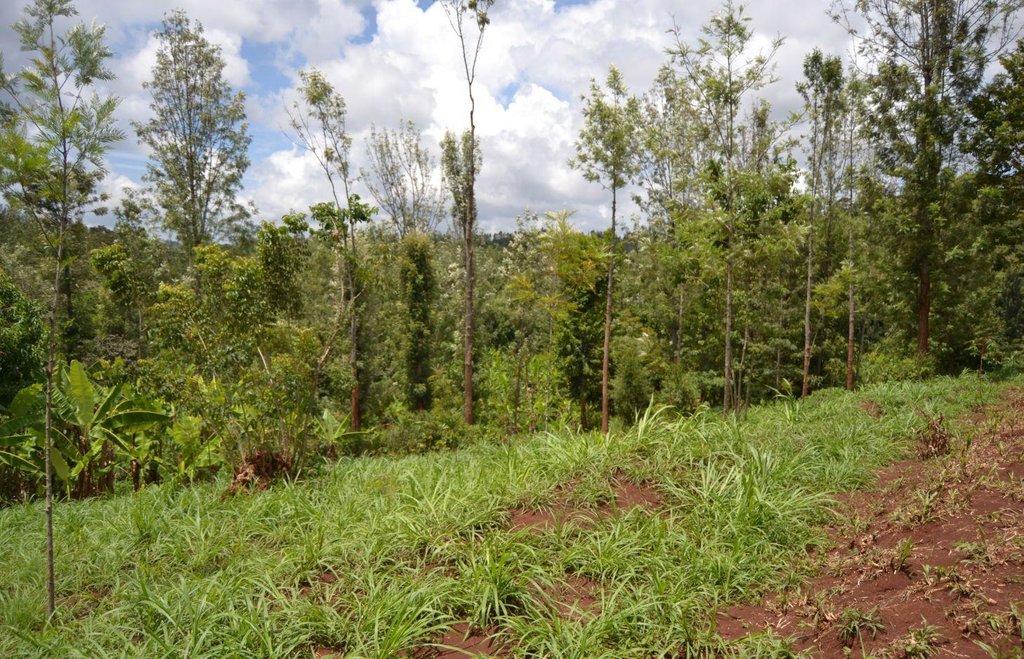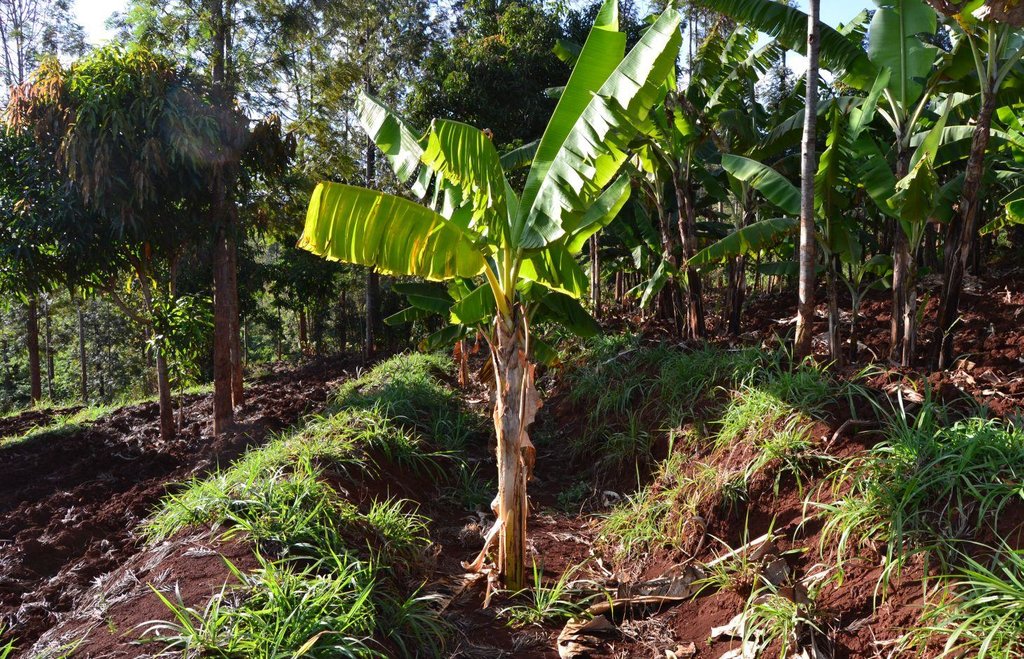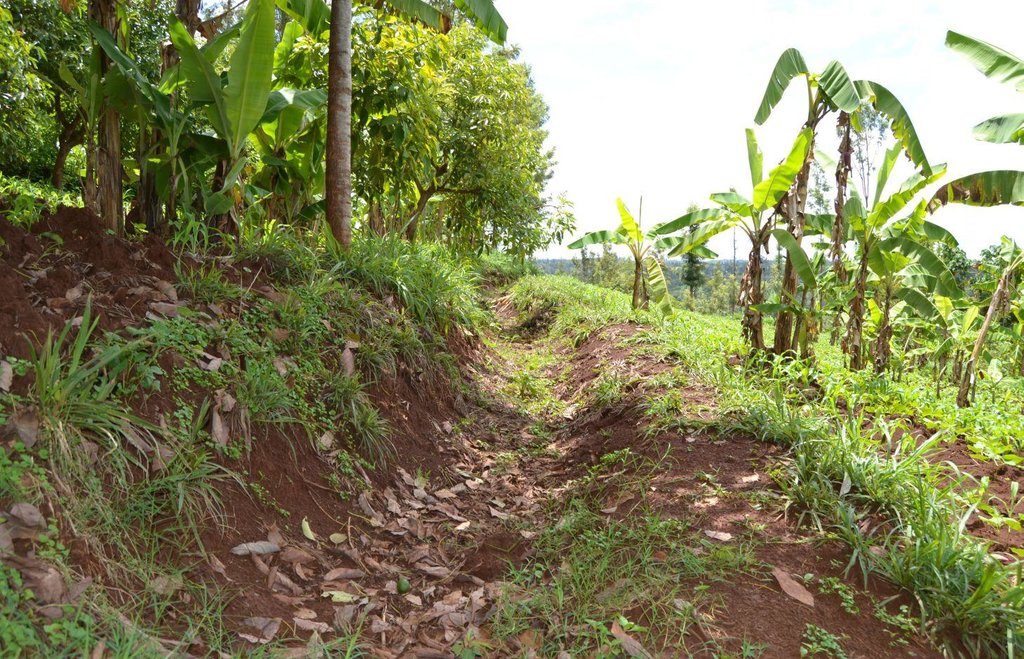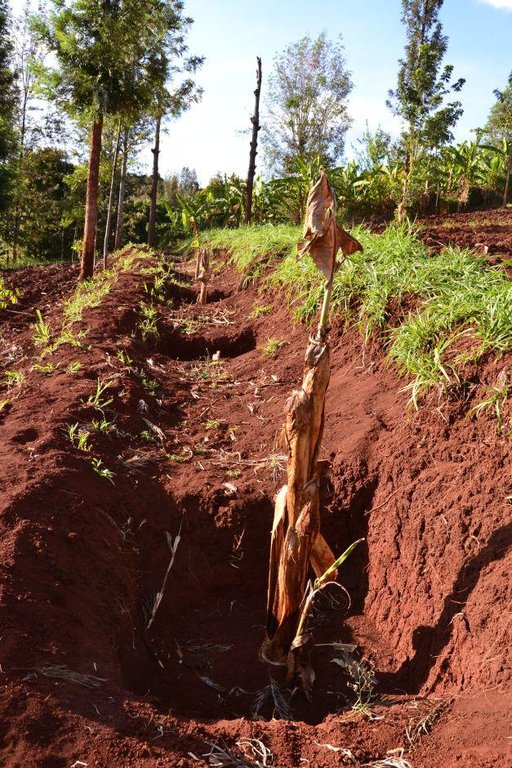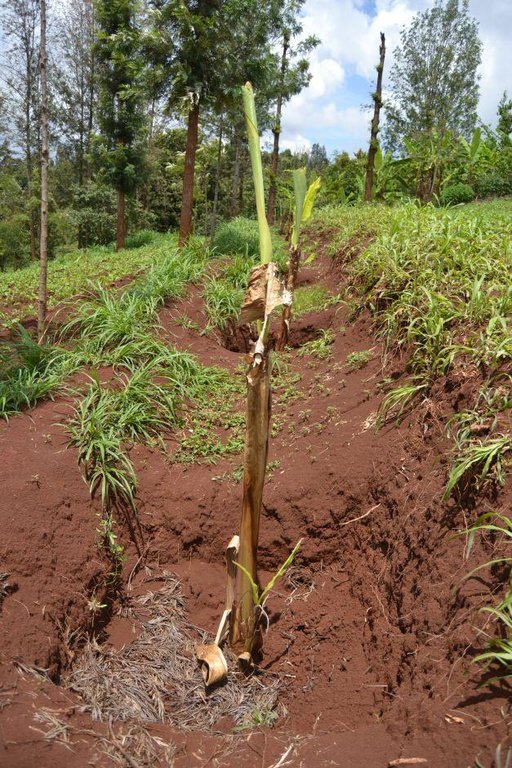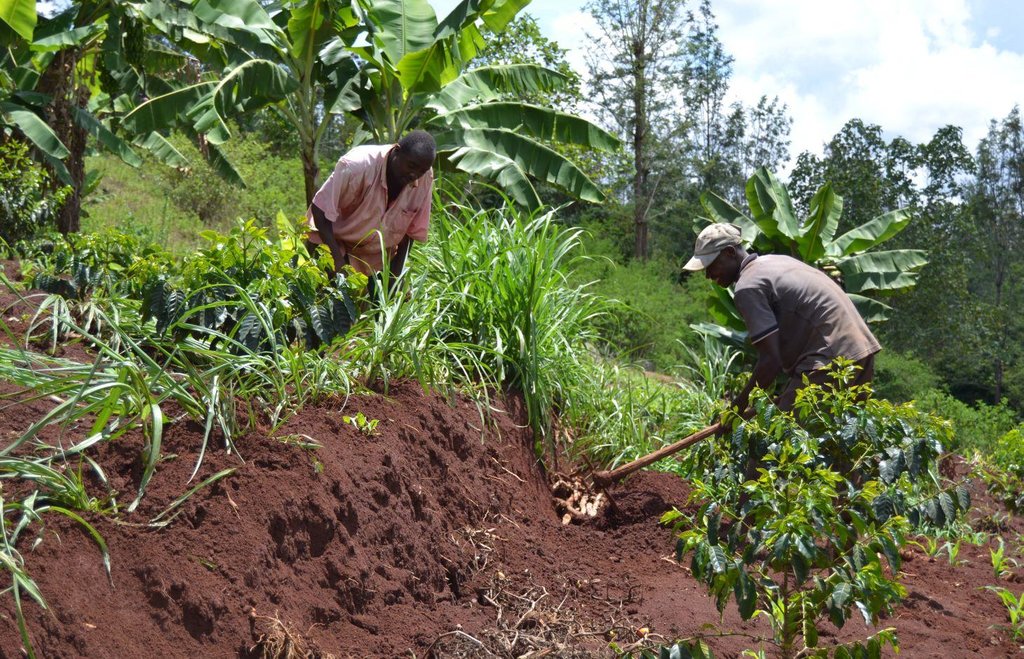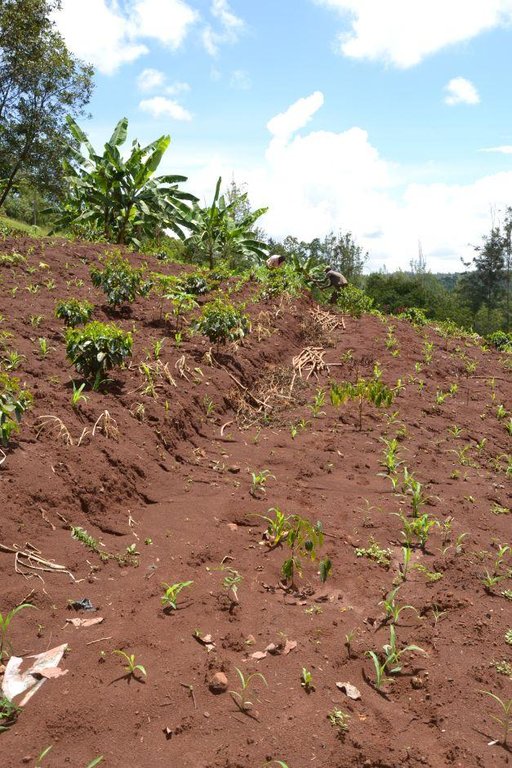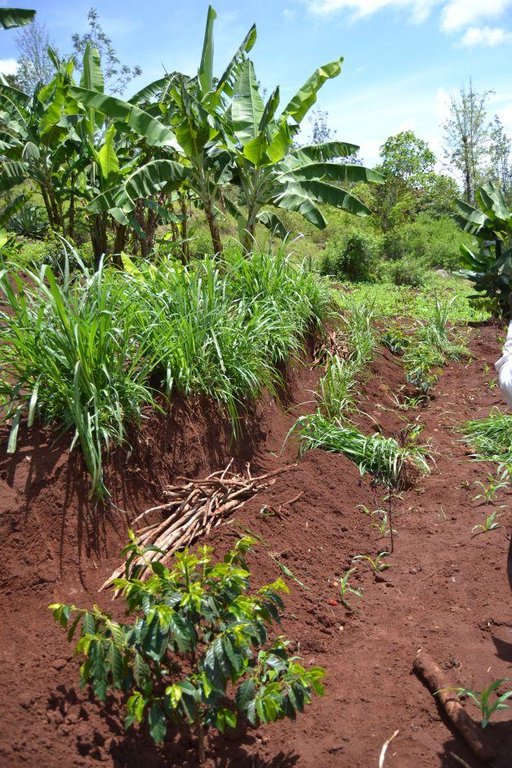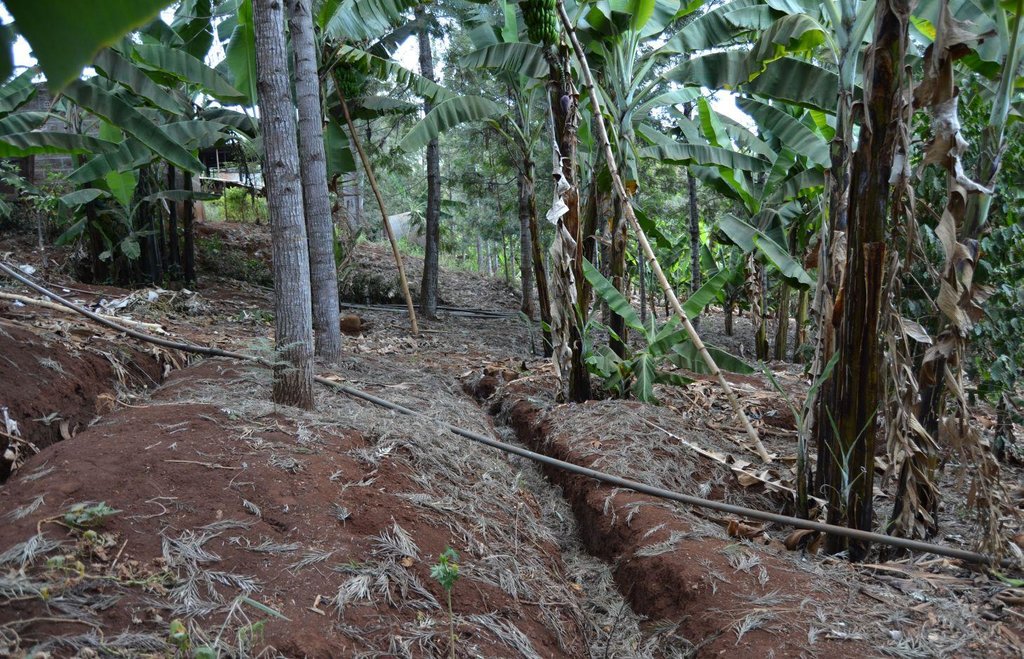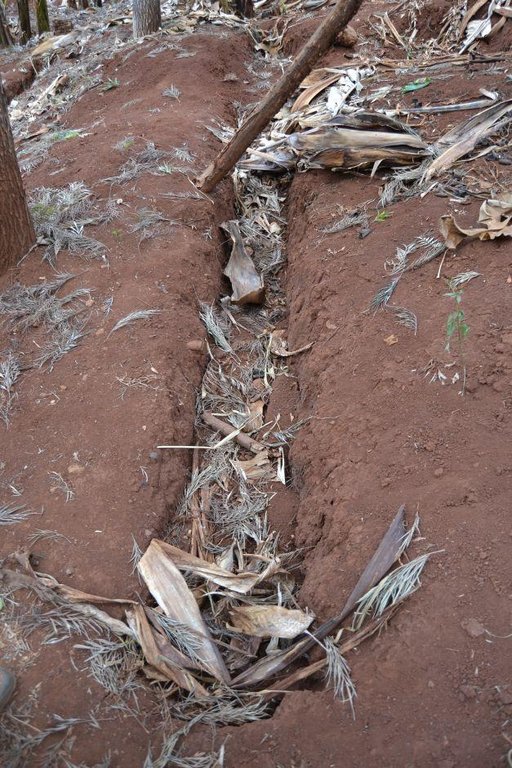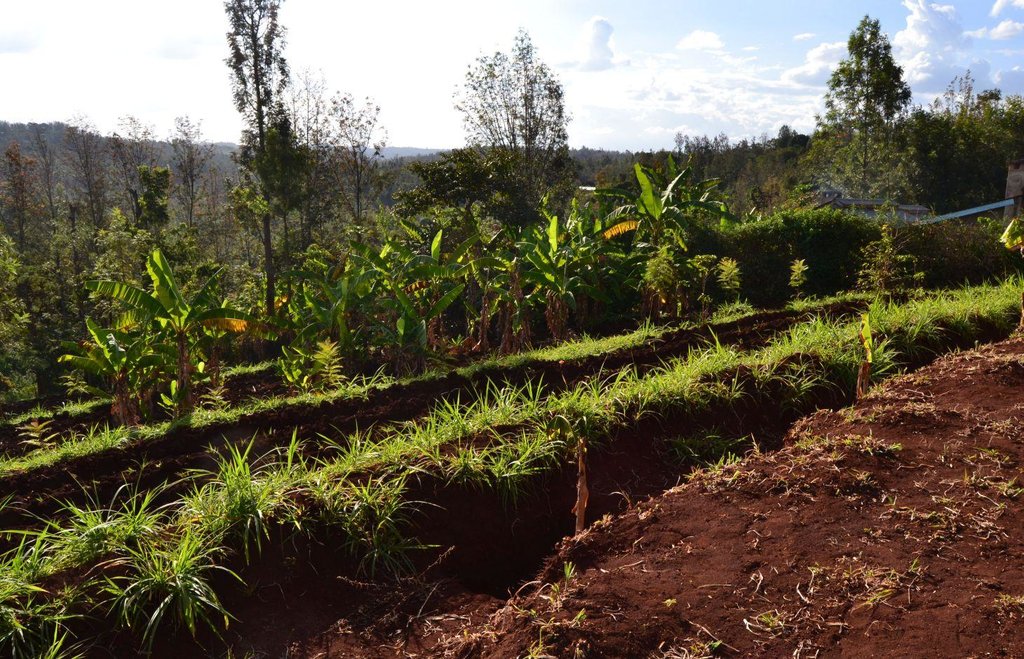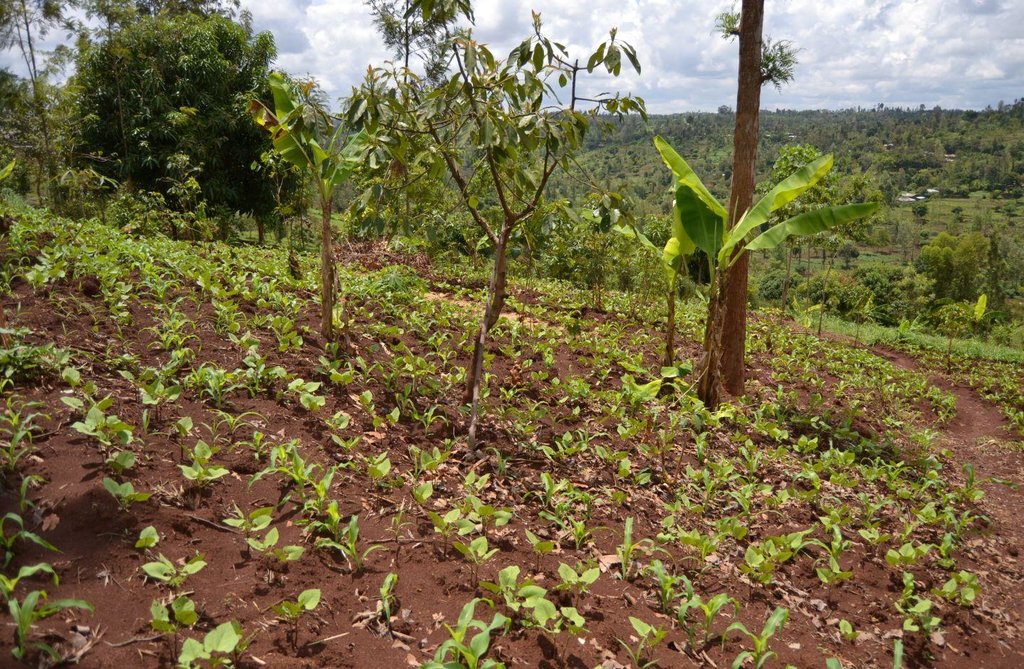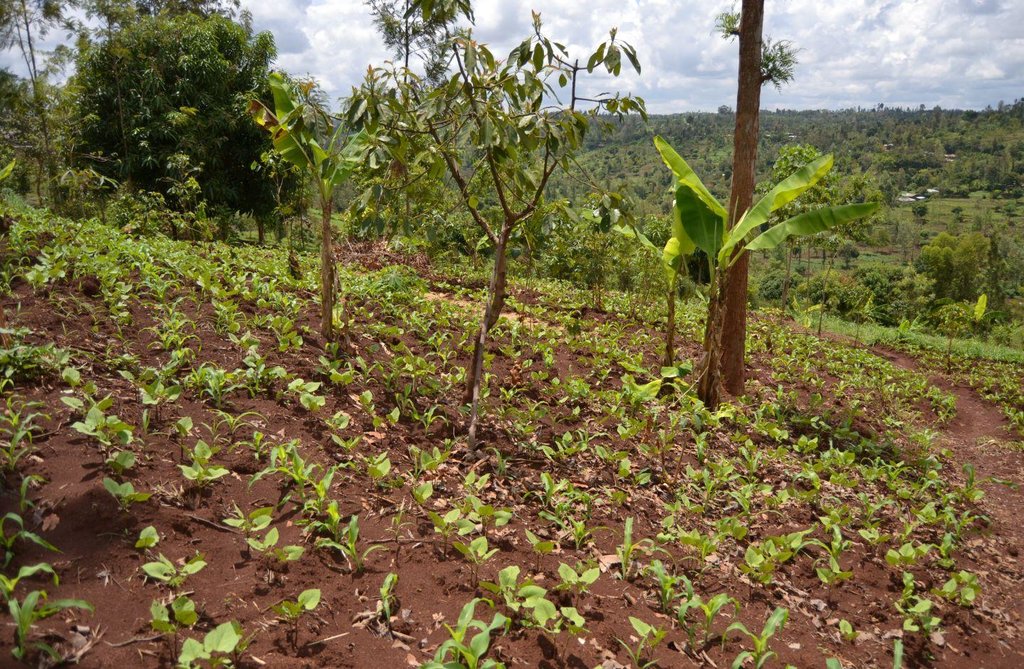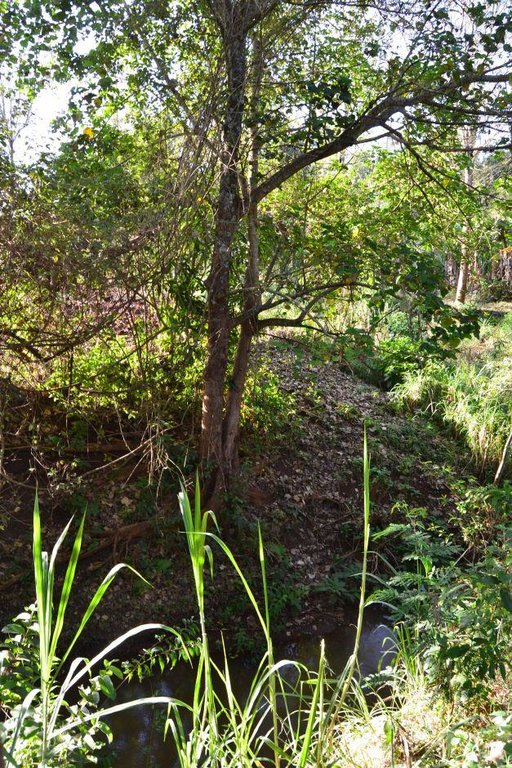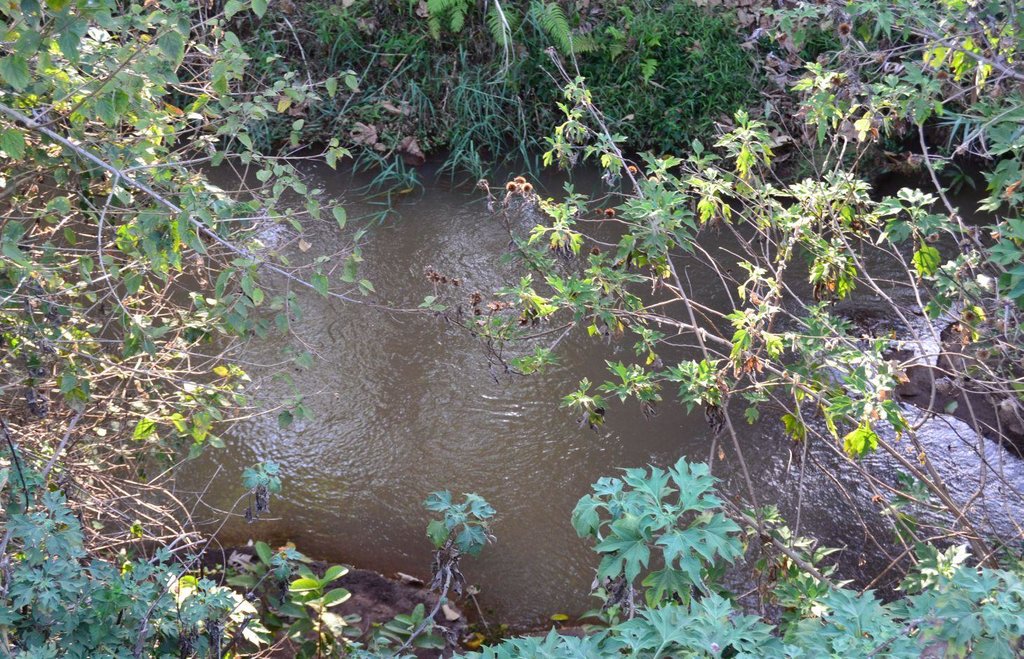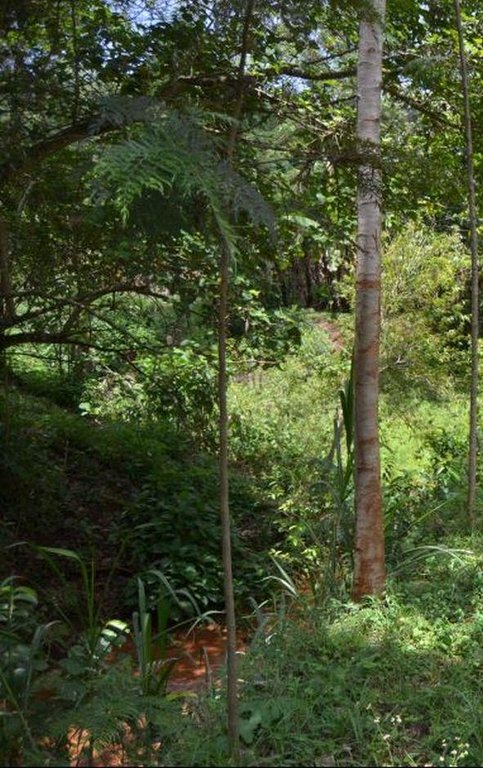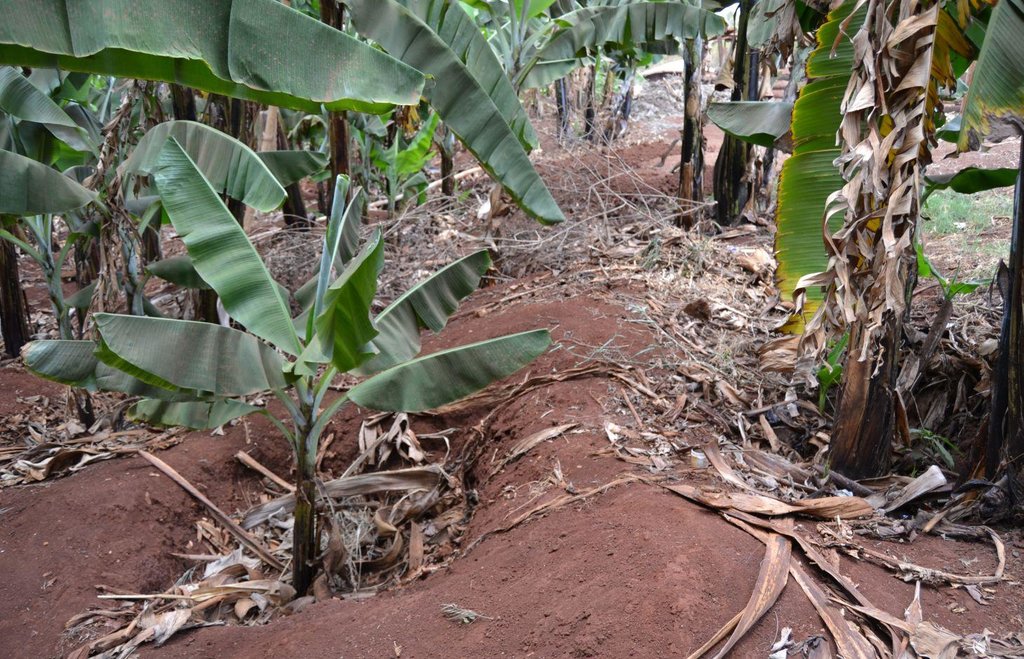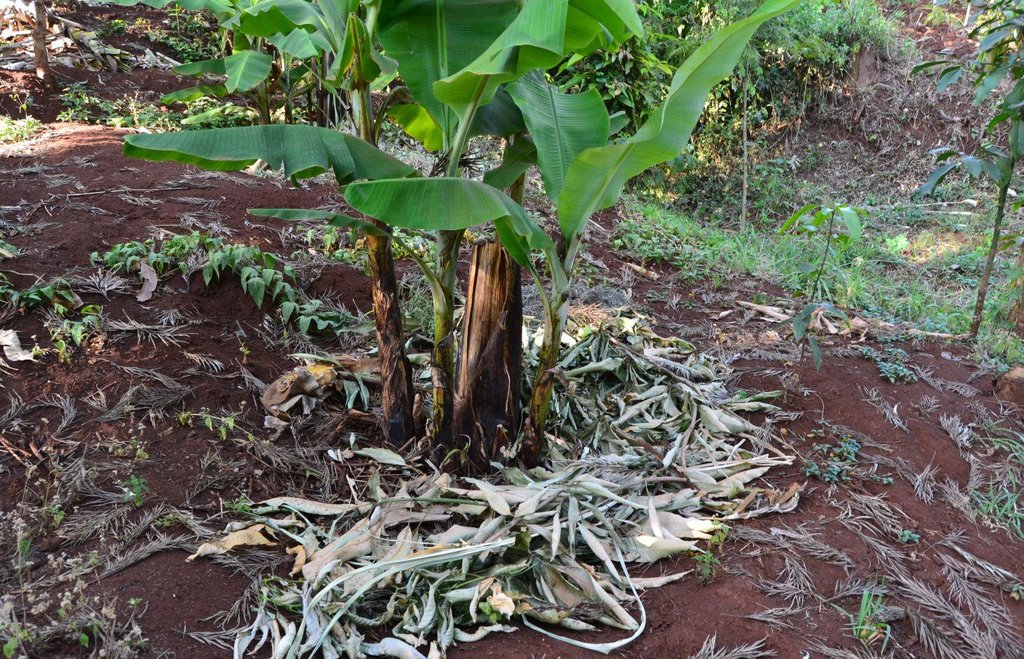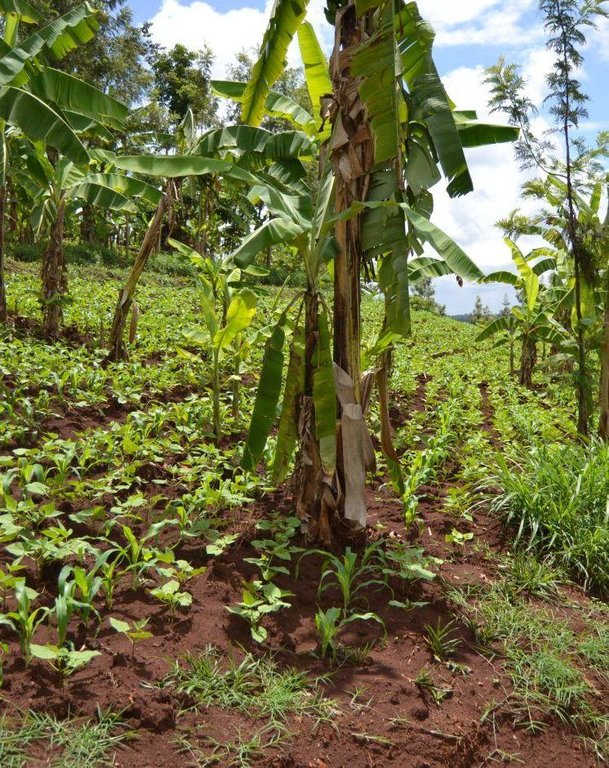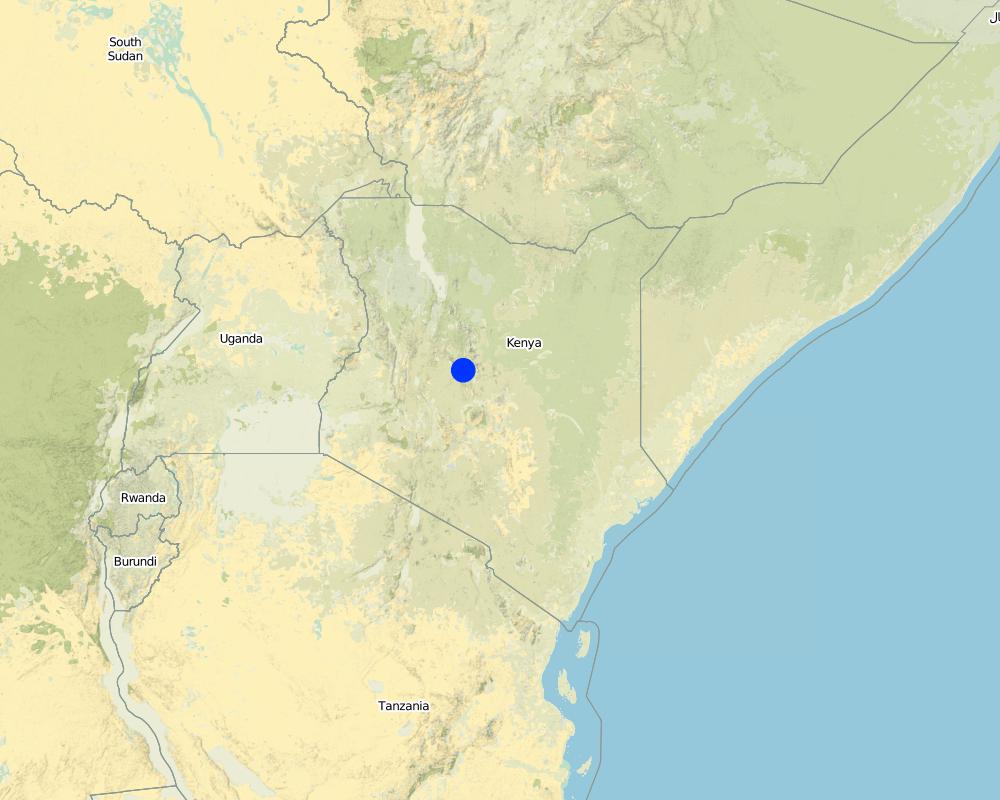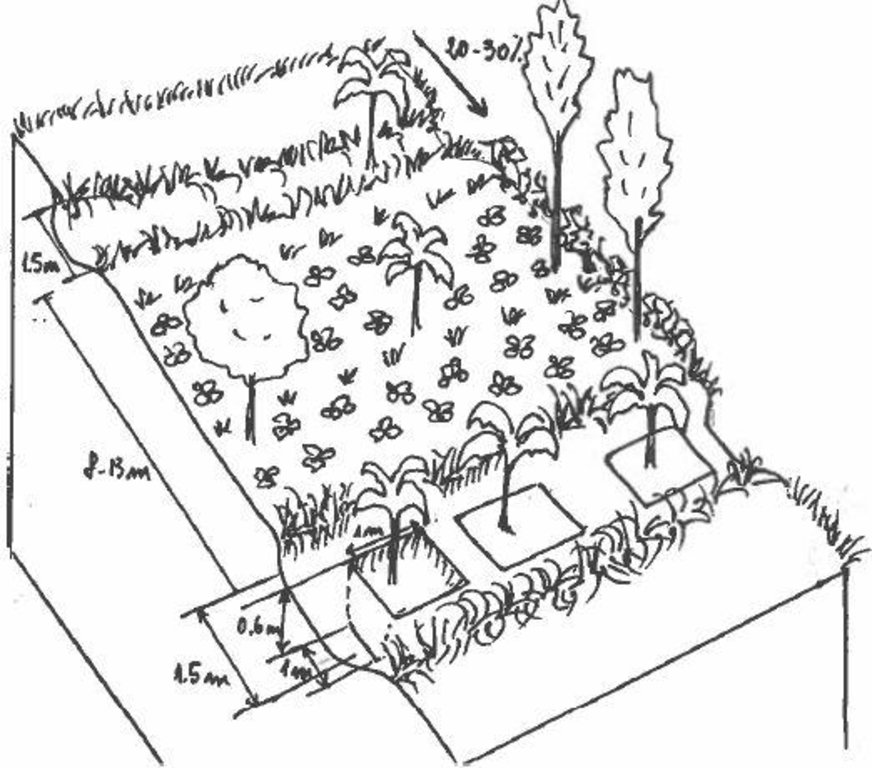Agroforestry land use in bench terraces with cut-off and infiltration ditches and Napier grass strips. [Кени]
- Шинийг нээх:
- Шинэчлэх:
- Эмхэтгэгч: Laura D'Aietti
- Хянан тохиолдуулагч: –
- Хянагчид: Alexandra Gavilano, Fabian Ottiger
technologies_1159 - Кени
- Бүрэн хураангуйн PDF хувилбар
- Бүрэн хураангуйг PDF-ээр хэвлэх
- Хөтөч дэх бүрэн хураангуй
- Бүрэн хураангуй (форматгүй)
- Agroforestry land use in bench terraces with cut-off and infiltration ditches and Napier grass strips.: 29 12-р сар 2016 (inactive)
- Agroforestry land use in bench terraces with cut-off and infiltration ditches and Napier grass strips.: 05 6-р сар 2017 (inactive)
- Agroforestry land use in bench terraces with cut-off and infiltration ditches and Napier grass strips.: 03 5-р сар 2019 (public)
Бүлгүүдийг үзэх
Бүгдийг дэлгэх Бүгдийг хаах1. Ерөнхий мэдээлэл
1.2 Технологийг үнэлэх, баримтжуулах ажилд хамаарах мэдээлэл өгсөн хүмүүс, байгууллагуудын холбоо барих мэдээлэл
Мэдээлэл өгсөн хүн (с)
ГТМ мэргэжилтэн:
F. K. Nyamu Jospeh
WRUA Sabasaba
Кени
Технологи баримтжуулах/үнэлэх ажилд дэмжлэг үзүүлсэн байгууллага(ууд)-ын нэр (шаардлагатай бол)
Food and Agriculture Organization of the United Nations (FAO) - Итали1.3 ВОКАТ-аар баримтжуулсан өгөгдлийг ашиглахтай холбоотой нөхцөл
Эмхэтгэгч болон гол мэдээлэгч хүн(хүмүүс) WOCAT аргачлалаар баримтжуулсан мэдээллийг ашиглахтай холбоотой нөхцлийг хүлээн зөвшөөрсөн:
Тийм
2. ГТМ Технологийн тодорхойлолт
2.1 Технологийн товч тодорхойлолт
Технологийн тодорхойлолт:
A combination of agricultural (e.g. intercropping, mulching, minimum tillage), vegetative (e.g. Napier grass strips, trees planting) and structural (e.g. ditches, bench terracing) measures which aim to maximise the overall yield in a sustainable manner (e.g. reduction of soil erosion and increasing the soil quality).
2.2 Технологийн дэлгэрэнгүй тодорхойлолт
Тодорхойлолт:
The land of the farmer is of 3 acres: 2 acres to plant maize (Zea mays) intercropped with beans (Phaseolus vulgaris) in combination with several trees species: Mangoes, Avocadoes, Bananas, Grevillea and Makadamia and half acre for coffee plantation with Bananas and half with Napier grass production for fodder (to feed cows). To increase and fasten the grass growth, manure is applied twice a year, before the rainy season (around February and September), while mulching is practiced under Banana trees every season. Minimum tillage is applied to reduce soil disturbance and to increase water use efficiency by minimizing direct evaporation, increasing infiltration and water recharge (Liniger, 1991) especially during dry seasons, which results in better crop yields.
For timber production Grevillea trees are planted scattered overall the land and on the edge of the river for demarcation (environmental role in stabilizing the soil against erosive forces).
Concerning the structural measures, the farmer constructed has built 14 bench terraces, six of them were designed to plant cash crops (coffee); each terrace is characterized by a ditch to cut off the drainage and collect water and nutrients; they are also used as paths to facilitate transportation and farm operations. Ditches are both drainage and infiltration types and are excavated along the contour.
Purpose of the Technology: Beans and maize are cultivated for home consumption but partially (about 20%-4 bags of maize and half bag of beans) also for commercial purposes. Coffee is harvested twice a year, with a production of about 500 kg per season; the coffee is sold at 45 Kenyan Shillings (KSh) per kg (SL-28-arabica varieties). Indeed, the farmer is interested in cultivating the certified and improved variety called Ruiru 11 which is generally disease resistant, easy to maintain (less expensive) with a modest risk of pests (according to the farmer). Grevillea timber is sold twice a year, only trees of 1.5 feet in diameter (about 45 cm), at about 80 KSh per feet. Beside the commercial role of Grevillea, when sufficiently grown these trees lead to a reduction of the wind speed, protect the intercrops and provide mulching material to be used over banana trees. The deep roots of mature Grevillea are not in competition with the crops for soil and water, instead they enhance infiltration (Otengi, 2007). Makadamia will be used to produce cooking oil, while bananas, avocados and mangoes are fruits collected for the local markets. Napier grass is cultivated to stabilize the ditches and for fodder production.
Establishment / maintenance activities and inputs: There is a high initial input (mainly labour) needed to create ditches and terraces and for planting crops is required. The vegetative and structural measures require a labour intensive management during the year, for example maintenance is necessary after each rainy season to repair ditches and to rebuild terraces (e.g. because of the accumulation of soil and organic matter in the pits and ditches). Concerning Napier grass, labour is employed regularly for weed control, to cut grass for fodder and every three seasons to replace and replant the grass because it becomes less productive. Concerning trees, in the Agroforestry systems, canopies of Mango and Avocado trees shade the soil reducing evapotranspiration and therefore improving soil water storage. On the other hand, regular pruning is needed when the shadow effect obstructs photosynthesis and therefore growth of the crops planted below (maize and beans). Pruning of branches is carried out also for firewood. Furthermore, a common practice is Grevillea root pruning to conserve soil moisture (Otengi, 2007) and to reduce competition for nutrients during the growing season. Indeed, the farmer explained how superficial roots may interfere with the Banana root system and to cut them he has created small trenches. Harvesting is carried out twice during the year for both cereals and coffee.
Natural / human environment: The area is characterized by rolling to hilly slopes, therefore it is exposed to erosion and land degradation. The combination of trees with mixed crops is adopted to maximise productivity and at the same time to prevent degradation by increasing the vegetative cover.
2.3 Технологийн гэрэл зураг
2.5 Энэ үнэлгээнд хамрагдсан технологийг хэрэгжүүлсэн улс орон/ бүс нутаг/ байршил
Улс:
Кени
Улс/аймаг/сум:
Kenya
Байршлын дэлгэрэнгүй тодорхойлолт:
Muthithi location-Kagurumo sublocation-Gatwamikwa village
Технологи өргөн дэлгэрсэн эсхийг тодорхойл:
- газар дээр жигд тархсан
Технологи газар нутгийн хэмжээнд жигд тархсан бол түүний эзлэх талбайг тодорхойлно уу (км2-аар):
0.0121
Хэрэв талбайн хэмжээ тодорхойгүй бол талбайн хэмжээг ойролцоогоор тодорхойлно уу:
- < 0.1 км2 (10 га)
Тайлбар:
About 1.21 ha (3 acres).
The area accounts for the land owned and cultivated by the farmer. According to the interviewee from the Ministry of Agriculture, on average farmers in Saba Saba sub-catchment own 1 acre of land (Elemans, 2011).
Map
×2.6 Хэрэгжсэн хугацаа
Байгуулсан тодорхой оныг мэдэхгүй бол баримжаа хугацааг тодорхойл:
- >50 жилийн өмнө (уламжлалт)
2.7 Технологийн танилцуулга
Технологийг хэрхэн нэвтрүүлснийг тодорхойл:
- Уламжлалт системийн хэсэг (> 50 жил)
Тайлбар (төслийн төрөл г.м.):
The technology has been started by the father of the farmer about 70 years ago. His initiative has been developed and improved over time thanks also to the support of the MoA extension officers.
3. ГТМ технологийн ангилал
3.2 Технологи нэвтрүүлсэн газрын одоогийн газар ашиглалтын хэлбэр(үүд)
Нэг газр нутгийн хэмжээнд хэрэгжих холимог газар ашиглалт:
Тийм
Газар ашиглалтын холимог тогтолцоог (тарилан/бэлчээр/ой мод) тодорхойл:
- ХАА-ой-бэлчээрийн цогц систем

Тариалангийн талбай
- Нэг наст үр тариа
- Олон наст (модлог биш) үр тариа
- Мод, сөөг тарих
Нэг наст үр тариа - Таримлыг тодорхойлно уу:
- үр тариа - эрдэнэ шиш
- тэжээлийн ургамал - үетэн
- буурцагт ургамал - шош
Олон наст (модлог биш) тариалан - Таримлыг тодорхойлно уу:
- банан/плантан/абака
Мод, бут тариалах - Таримлыг тодорхойлно уу:
- авокадо
- манго, давжаа манго, гуав
- модны самар (бразил самар, туулайн бөөр, хушга, бүйлс г.м.)
- coffee
Жилд ургамал ургах улирлын тоо:
- 2
Тодорхойлно уу:
Longest growing period in days: 122Longest growing period from month to month: from about March to JuneSecond longest growing period in days: 61Second longest growing period from month to month: from about October to November
Сөөлжлөн тариалалт хийгддэг үү?
Тийм

Бэлчээрийн газар
Эрчимжсэн мал аж ахуй / тэжээл үйлдвэрлэл:
- Хадлан буюу бэлчээрт ашиглагдахгүй талбай
- cattle

Байгалийн ой / модтой газар
Модны төрөл:
- Grevillea robusta
Тайлбар:
Trees/ shrubs species: Grevillea, Coffee
Fruit trees / shrubs species: Persea americana (avocado), Musa sapientum (banana/plantain), Mangifera indica (Mango), Macadamia tetraphylla (nuts)
Grass species: Pennisetum pyramidalis (Napier grass or elephant grass)
Major land use problems (compiler’s opinion): Soil erosion and nutrient leaching which could drain into the river (Fig. 17).
Major land use problems (land users’ perception): The most important limiting factor to the crop and fodder production remains water: not only related to the weather conditions (e.g. shorter and delayed rainy seasons) but due to the lack of a proper irrigation systems, to minimize the water losses and time. Furthermore, soil has been considered 'not good', because does not hold enough water due to the slope of the land.
Livestock density: < 1 LU/km2
Fodder for 2 cows, from Napier grass
3.3 Технологи хэрэгжүүлснээр газар ашиглалтад өөрчлөлт гарсан уу?
Технологи хэрэгжүүлснээр газар ашиглалтад өөрчлөлт гарсан уу?
- Тийм (Технологи хэрэгжүүлэхээс өмнөх үеийн газар ашиглалтын талаархи асуулгыг бөглөнө үү)
Нэг газр нутгийн хэмжээнд хэрэгжих холимог газар ашиглалт:
Тийм
Газар ашиглалтын холимог тогтолцоог (тарилан/бэлчээр/ой мод) тодорхойл:
- ХАА-н ойжуулалт

Тариалангийн талбай
- Нэг наст үр тариа

Байгалийн ой / модтой газар
3.4 Усан хангамж
Технологи хэрэгжүүлсэн газрын усан хангамж:
- Байгалийн усалгаатай
3.6 Технологийг бүрдүүлэх ГТМ арга хэмжээ

Агрономийн арга хэмжээ
- А1: Ургамал/ хөрсөн бүрхэвч
- А2: Органик нэгдэл/ хөрсний үржил шим
- А3: Хөрсний гадаргыг сайжруулах

Ургамлын арга хэмжээ
- V1: Мод ба бут, сөөг
- V2: Өвс ба олон наст өвслөг ургамал

Барилга байгууламжийн арга хэмжээ
- S1: Террас
- S4: Тэгшилсэн ба шаталсан шуудуу, нүх
Тайлбар:
Type of agronomic measures: mulching, legume inter-planting, manure / compost / residues, minimum tillage
Type of vegetative measures: aligned: -graded strips
3.7 Технологид харгалзах газрын доройтлын төрөл

хөрс усаар эвдрэх
- Wt: Хөрсний гадаргын угаагдал

хөрсний химийн доройтол
- Cn: Үржил шим ба ялзмаг буурах (элэгдлийн шалтгаангүй)

усны доройтол
- Hp: Гадаргын усны чанар муудах
Тайлбар:
Main causes of degradation: soil management (Poor soil management practices), deforestation / removal of natural vegetation (incl. forest fires) (Poor vegetation cover, mainly herbaceous), disturbance of water cycle (infiltration / runoff) (Land use: cropland), other natural causes (avalanches, volcanic eruptions, mud flows, highly susceptible natural resources, extreme topography, etc.) specify (From gentle to hilly slope)
Secondary causes of degradation: Heavy / extreme rainfall (intensity/amounts) (Especially during wet seasons: March-June and October-November)
3.8 Газрын доройтлоос урьдчилан сэргийлэх, сааруулах ба нөхөн сэргээх
Газрын доройтолтой холбоотойгоор Технологи ямар зорилго тавьсан болохыг тодорхойл:
- газрын доройтлоос урьдчилан сэргийлэх
- Газрын доройтлыг бууруулах
4. Техникийн нөхцөл, хэрэгжүүлсэн үйл ажиллагаа, материал ба зардал
4.1 Технологийн техник зураг
Техник тодорхойлолт (техник зургийн тайлбар):
Detailed overview of the Agroforestry system in a bench terrace with infiltration (retention) and cut off (drainage) ditches. Along them, strips of Napier grass on both sides.
Location: Upper Saba saba river. Kagurumo in Muthithi location
Technical knowledge required for land users: moderate
Main technical functions: control of dispersed runoff: retain / trap, control of dispersed runoff: impede / retard, reduction of slope angle, reduction of slope length, improvement of ground cover, increase in organic matter, increase of infiltration, increase / maintain water stored in soil, water harvesting / increase water supply, sediment retention / trapping, sediment harvesting
Secondary technical functions: improvement of topsoil structure (compaction), stabilisation of soil (eg by tree roots against land slides), increase in nutrient availability (supply, recycling,…), improvement of water quality, buffering / filtering water, increase of biomass (quantity)
Mulching
Material/ species: Organic residues around Banana trees
Quantity/ density: undefined
Legume inter-planting
Quantity/ density: 3bags270kg
Manure / compost / residues
Material/ species: Manure from two cows
Quantity/ density: 8 tonnes
Remarks: for 1 year
Aligned: -graded strips
Vegetative material: G : grass
Number of plants per (ha): 400 grass per2lines strip
Vertical interval between rows / strips / blocks (m): few cm
Spacing between rows / strips / blocks (m): 1
Vertical interval within rows / strips / blocks (m): 0.4
Width within rows / strips / blocks (m): 0.6-1
Scattered / dispersed
Vegetative material: T : trees / shrubs, F : fruit trees / shrubs
Number of plants per (ha): about 80
Trees/ shrubs species: Grevillea, Coffee
Fruit trees / shrubs species: Persea americana, Musa sapientum, Mangifera indica, Macadamia tetraphylla
Grass species: Pennisetum pyramidalis (Napier grass or elephant grass)
Slope (which determines the spacing indicated above): 20-25%
If the original slope has changed as a result of the Technology, the slope today is (see figure below): 15%
Gradient along the rows / strips: 5-8%
Diversion ditch/ drainage
Vertical interval between structures (m): 1
Spacing between structures (m): 8-13
Depth of ditches/pits/dams (m): 0.6-1
Retention/infiltration ditch/pit, sediment/sand trap
Vertical interval between structures (m): 1
Spacing between structures (m): 8-13
Depth of ditches/pits/dams (m): 0.6-1
Terrace: forward sloping
Vertical interval between structures (m): 1
Spacing between structures (m): 12-15
Slope (which determines the spacing indicated above): 5-8 (moderate) (Fig.4-7Annex3)%
If the original slope has changed as a result of the Technology, the slope today is: 5%
Lateral gradient along the structure: 25-30%
Зохиогч:
D'Aietti Laura
Он, сар, өдөр:
02/11/2012
4.2 Материал болон зардалд хамаарах ерөнхий мэдээлэл
бусад/үндэсний мөнгөн нэгж (тодорхойл):
Kenyan Schellings
Хэрэв боломжтой бол үндэсний валютын Америк доллартай харьцах харьцааг бичнэ үү (тухайлбал, 1 ам.дол. = 79,9 Бразил реал): 1 ам.дол. =:
85.9
Хөлсний ажилчны нэг өдрийн цалингийн хэмжээг тодорхойлно уу:
2.00
4.3 Бий болгох үйл ажиллагаа
| Үйл ажиллагаа | Хугацаа (улирал) | |
|---|---|---|
| 1. | Digging holes and planting Coffee seedlings (20 KSh per plant) | |
| 2. | Digging holes (1 feet ×1 feet) and planting trees (seedlings)- 4 days ×5 persons at Ksh 200.e.g. the main work consist of digging small pits for bananas (300 plants) | |
| 3. | Establishment of the infiltration ditches and cutoff drains (total 5). 3p.d. (200 Ksh *3) each. | Each season: during dry season |
| 4. | Establishment of the retention ditches with bench terraces (tot.8): 2 p.d., 250 Ksh per day | Each season: during dry season |
| 5. | Purchase cows |
Тайлбар:
Life span of the cows: Several years
4.4 Бий болгоход шаардагдсан зардал, хөрөнгийн өртөг
| Зардлын нэр, төрөл | Хэмжих нэгж | Тоо хэмжээ | Нэгжийн үнэ | Зардал бүрийн нийт өртөг | Нийт дүнгээс газар ашиглагчийн төлсөн % | |
|---|---|---|---|---|---|---|
| Хөдөлмөр эрхлэлт | Digging holes and planting seedlings | person/day | 20.0 | 2.3 | 46.0 | 100.0 |
| Хөдөлмөр эрхлэлт | Infiltration ditches | person/day | 1.0 | 1277.0 | 1277.0 | 100.0 |
| Хөдөлмөр эрхлэлт | Establishment of the infiltration ditches and cutoff drains (total 5) | person/day | 15.0 | 2.333 | 35.0 | 100.0 |
| Хөдөлмөр эрхлэлт | stablishment of the retention ditches with bench terraces (tot.8) | person/day | 16.0 | 2.9375 | 47.0 | 100.0 |
| Тоног төхөөрөмж | Cow | pieces | 2.0 | 349.0 | 698.0 | |
| таримал материал | Seedlings Mango | pieces | 10.0 | 0.2 | 2.0 | 100.0 |
| таримал материал | Coffee seedlings | pieces | 250.0 | 0.464 | 116.0 | 100.0 |
| таримал материал | Seedlings Avocado | pieces | 12.0 | 0.25 | 3.0 | 100.0 |
| таримал материал | Seedlings Macadamia | pieces | 8.0 | 0.25 | 2.0 | 100.0 |
| таримал материал | Grevillea | pieces | 50.0 | 0.12 | 6.0 | 100.0 |
| Бусад | cows | animal | 2.0 | 349.0 | 698.0 | 100.0 |
| Технологи бий болгох нийт үнэ өртөг | 2930.0 | |||||
| Технологи бий болгох нийт үнэ өртөг, ам.доллар | 34.11 | |||||
Тайлбар:
Duration of establishment phase: 6 month(s)
4.5 Арчилгаа/ урсгал үйл ажиллагаа
| Үйл ажиллагаа | Хугацаа/ давтамж | |
|---|---|---|
| 1. | Minimum tillage and planting maize and beans | 2 times in a year |
| 2. | Harvesting maize/beans (around Feb/March and Ag/Sept) | 2 times in a year |
| 3. | Feeding cows on daily basis (normally 3 times a day): 200 Ksh is the price of 1 labour to feed the cows with lunch, for 6 days | daily basis |
| 4. | Preparation and application of manure | 2 times in a year |
| 5. | Digging planting holes and planting grass | 2 times (because they get 'old') or 1 half year, depending on the conditions |
| 6. | Maintenance of the grass (weed control and cutting Napier grass/repairing and collecting fodder) | Every season (March/Sept); cutting Napier: 2times in a season |
| 7. | Clearing the tree for selling timber (the price depends also of the use of the chainsaw (or saw) or not -(considering 4 trees at the time) - with machine operator | When in need of cash (not regularly), not less than 5 years after planting |
| 8. | Prepare manure and feeding cows on daily basis (normally 3 times a day): 200 Ksh is the price of 1 labour to feed the cows with lunch, for 6 days (7200 for 6 months) | Every season |
| 9. | Pruning branches/roots and let them dry for firewood- (considering 4 trees at the time) 3 persons days- 200Ksh | Every 3 seasons (and when shortage of firewood) |
| 10. | Mulching | Twice in the year on Bananas |
| 11. | Harvesting coffee | Twice in the year |
| 12. | Distribute manure on Napier grass, also in the pits | 2 times |
| 13. | Repairing the ditches and remove excess of soil/leaves accumulated during the rainy season | After rains (every season) |
| 14. | Rebuilt repair terraces | 3 times per year |
4.6 Арчилгаа/урсгал ажилд шаардагдсан зардал, хөрөнгийн өртөг (нэг жилд)
| Зардлын нэр, төрөл | Хэмжих нэгж | Тоо хэмжээ | Нэгжийн үнэ | Зардал бүрийн нийт өртөг | Нийт дүнгээс газар ашиглагчийн төлсөн % | |
|---|---|---|---|---|---|---|
| Хөдөлмөр эрхлэлт | Minimum tillage and planting maize and beans | person/days | 15.0 | 1.5333 | 23.0 | 100.0 |
| Хөдөлмөр эрхлэлт | Harvesting maize/beans | person/days | 10.0 | 1.2 | 12.0 | 100.0 |
| Хөдөлмөр эрхлэлт | Feeding cows and preparing the manure on daily basis | person/days | 312.0 | 0.166666 | 52.0 | 100.0 |
| Хөдөлмөр эрхлэлт | Preparation and application of manure | person/days | 2.0 | 2.5 | 5.0 | 100.0 |
| таримал материал | Seeds Maize | kg | 10.0 | 2.3 | 23.0 | 100.0 |
| таримал материал | Seeds Beans | kg | 5.0 | 2.0 | 10.0 | 100.0 |
| таримал материал | Seedlings grass | per trench | 200.0 | |||
| Бусад | Labour: Digging planting holes and planting grass | person/days | 5.0 | 1.8 | 9.0 | 100.0 |
| Бусад | Labour: Maintenance of the grass (weed control and cutting Napier grass/repairing and collecting fodder) | person/days | 3.0 | 1.66666 | 5.0 | 100.0 |
| Бусад | Labour: Clearing the tree for selling timber (the price depends also of the use of the chainsaw (or saw) or not -(considering 4 trees at the time) - with machine operator | person/days | 1.0 | 8.0 | 8.0 | 100.0 |
| Бусад | Labour: Repairing the ditches and remove excess of soil/leaves accumulated during the rainy season | person/days | 2.0 | 2.5 | 5.0 | 100.0 |
| Бусад | Labour: Rebuilt repair terraces | person/days | 5.0 | 1.8 | 9.0 | 100.0 |
| Технологийн арчилгаа/урсгал үйл ажиллагаанд шаардагдах нийт үнэ өртөг | 161.0 | |||||
| Технологи арчилах ба урсгал ажлын нийт үнэ өртөг, ам.доллар | 1.87 | |||||
Тайлбар:
Machinery/ tools: panga, fork djembe, hoes, shovel, fork djembe, panga, saw, shovels, fork djembe
The costs has been computed during the period of the field visit and include all the costs for the establishment and the maintenance of the different measures (structural, agronomic and vegetative), for 3 acre of land.
4.7 Зардалд нөлөөлж байгаа хамгийн чухал хүчин зүйл
Өртөг, зардалд нөлөөлөх гол хүчин зүйл:
In the farmer's opinion, the main constrains are the costs carried out to maintain the structural measures described. Water instead become the limiting environmental factor during dry season.
5. Байгаль ба нийгмийн нөхцөл
5.1 Уур амьсгал
Жилийн нийлбэр хур тундас
- < 250 мм
- 251-500 мм
- 501-750 мм
- 751-1,000 мм
- 1,001-1,500 мм
- 1,501-2,000 мм
- 2,001-3,000 мм
- 3,001-4,000 мм
- > 4,000 мм
Агро-уур амьсгалын бүс
- чийглэг
Thermal climate class: subtropics. June, July and August
5.2 Гадаргын хэлбэр
Дундаж налуу:
- хавтгай (0-2 %)
- бага зэрэг налуу (3-5 %)
- дунд зэрэг налуу (6-10 % )
- хэвгий (11-15 %)
- налуу (16-30 %)
- их налуу (31-60 % )
- эгц налуу (>60 %)
Гадаргын хэлбэр:
- тэгш өндөрлөг / тал
- нуруу
- уулын энгэр
- дов толгод
- бэл
- хөндий
Өндрийн бүслүүр:
- 0-100 д.т.д. м.
- 101-500 д.т.д. м.
- 501-1,000 д.т.д м.
- 1,001-1,500 д.т.д м.
- 1,501-2,000 д.т.д м.
- 2,001-2,500 д.т.д. м.
- 2,501-3,000 д.т.д. м.
- 3,001-4,000 д.т.д м.
- > 4,000 д.т.д. м.
5.3 Хөрс
Хөрсний дундаж зузаан:
- маш нимгэн (0-20 см)
- нимгэн (21-50 см)
- дунд зэрэг зузаан (51-80 см)
- зузаан (81-120 cм)
- маш зузаан (>120 cм)
Хөрсний бүтэц (өнгөн хөрс):
- дундаж (элсэнцэр, шавранцар)
Өнгөн хөрсөнд агуулагдах ялзмаг:
- бага (<1 % )
5.4 Усны хүртээмж ба чанар
Гүний усны түвшин:
> 50 м
Гадаргын усны хүртээмж:
дунд зэрэг
Усны чанар (цэвэршүүлээгүй):
сайн чанарын ундны ус
5.5 Биологийн олон янз байдал
Зүйлийн олон янз байдал:
- дунд зэрэг
5.6 Технологи нэвтрүүлсэн газар ашиглагчдын тухай мэдээлэл
Үйлдвэрлэлийн системийн зах зээлийн чиг баримжаа:
- амь зуух арга хэлбэрийн (өөрийгөө хангах)
- холимог (амьжиргаа ба худалдаанд)
Бусад эх үүсвэрээс олох орлого:
- Нийт орлогын 50 %-иас дээш
Чинээлэг байдлын түвшин:
- дундаж
Хувь хүн эсвэл бүлэг:
- Хувь хүн / өрх
Механикжилтын түвшин:
- гар ажил
Хүйс:
- эмэгтэй
- эрэгтэй
Газар ашиглагчдын бусад шинж чанарыг тодорхойл:
Population density: 10-50 persons/km2
Annual population growth: 2% - 3%
Off-farm income specification: The farmer is rich because he owns 3 acre of land and livestock, assets (electricity) which are above the average standards of the community. No family food insecure issues during all year, and he was a teacher.
5.7 Газар ашиглагчийн технологи нэвтрүүлсэн газрын дундаж талбайн хэмжээ
- < 0.5 га
- 0.5-1 га
- 1-2 га
- 2-5 га
- 5-15 га
- 15-50 га
- 50-100 га
- 100-500 га
- 500-1,000 га
- 1,000-10,000 га
- > 10,000 га
Энэ талбай том, жижиг, дунд алинд хамаарах вэ (орон нутгийн нөхцөлд харгалзуулна уу)?
- бага-хэмжээний
5.8 Газар эзэмшил, газар ашиглах эрх, ус ашиглах эрх
Газар өмчлөл:
- хувь хүн, өмчийн гэрчилгээгүй
Газар ашиглах эрх:
- хувь хүн
Ус ашиглах эрх:
- нээлттэй хүртэх (зохион байгуулалтгүй)
Тайлбар:
Water use rights depend on the use: open access for drinking and domestic uses.
5.9 Дэд бүтэц, үйлчилгээний хүртээмж
эрүүл мэнд:
- ядуу
- дунд зэргийн
- сайн
боловсрол:
- ядуу
- дунд зэргийн
- сайн
техник зөвлөгөө:
- ядуу
- дунд зэргийн
- сайн
хөдөлмөр эрхлэлт (жишээ нь, ХАА-аас өөр):
- ядуу
- дунд зэргийн
- сайн
зах зээл:
- ядуу
- дунд зэргийн
- сайн
эрчим хүчний хангамж:
- ядуу
- дунд зэргийн
- сайн
зам тээвэр:
- ядуу
- дунд зэргийн
- сайн
усан хангамж ба ариутгал:
- ядуу
- дунд зэргийн
- сайн
санхүүгийн үйлчилгээ:
- ядуу
- дунд зэргийн
- сайн
6. Үр нөлөө ба дүгнэлт
6.1 Технологийн талбайд үзүүлсэн нөлөө
Нийгэм-эдийн засгийн үр нөлөө
Үйлдвэрлэл
газар тариалангийн үйлдвэрлэл
тэжээл үйлдвэрлэл
модлогийн бүтээмж
Орлого, зарлага
ХАА-н зардал
тухайн аж ахуйн орлого
Нийгэм-соёлын үр нөлөө
хүнсний аюулгүй байдал/ өөрийн хэрэгцээг хангах
нийгэм, эдийн засгийн хувьд эмзэг бүлгийнхний нөхцөл байдал
Экологийн үр нөлөө
Усны эргэлт/ илүүдэл
гадаргын урсац
ууршилт
Хөрс
хөрсний чийг
хөрсөн бүрхэвч
хөрс алдагдах
Биологийн олон янз байдал: ургамал, амьтан
газрын дээрхи / доорхи карбон
6.2 Технологийн талбайн гадна үзүүлсэн үр нөлөө
Усны хүртээмж
голын адагт лаг шавар хуримтлагдах
буферлэх / шүүлтүүрийн багтаамж
6.3 Технологийн уур амьсгалын өөрчлөлт, цаг агаарын гамшигт үзэгдэлд өртөх байдал ба эмзэг байдал (газар ашиглагчийн бодлоор)
Уур амьсгалын аажим өөрчлөлт
Уур амьсгалын аажим өөрчлөлт
| Улирал | Өсөх эсвэл буурах | Технологи түүний нөлөөг хэрхэн бууруулж байна? | |
|---|---|---|---|
| жилийн дундаж температур | Өсөлт | мэдэхгүй |
Уур амьсгалаас хамаарах аюул (гамшиг)
Цаг уурын гамшигт үзэгдэл
| Технологи түүний нөлөөг хэрхэн бууруулж байна? | |
|---|---|
| орон нутгийн аадар бороо | сайн |
| орон нутгийн салхин шуурга | сайн |
Уур амьсгалын гамшиг
| Технологи түүний нөлөөг хэрхэн бууруулж байна? | |
|---|---|
| ган гачиг | муу |
Усзүйн гамшиг
| Технологи түүний нөлөөг хэрхэн бууруулж байна? | |
|---|---|
| усны үер (гол) | сайн |
Уур амьсгалд хамаарах бусад үр дагавар
Уур амьсгалд хамаарах бусад үр дагавар
| Технологи түүний нөлөөг хэрхэн бууруулж байна? | |
|---|---|
| цргалтын хугацаа багасах | мэдэхгүй |
6.4 Өртөг ба ашгийн шинжилгээ
Бий болгох зардалтай харьцуулахад ямар ашиг өгсөн бэ (газар ашиглагчийн бодлоор)?
Богино хугацаанд эргэн төлөгдөх байдал:
бага зэрэг сөрөг
Урт хугацаанд эргэн төлөгдөх байдал:
бага зэрэг эерэг
Арчилгаа/урсгал зардалтай харьцуулахад ямар ашиг өгсөн бэ (газар ашиглагчийн бодлоор)?
Богино хугацаанд эргэн төлөгдөх байдал:
бага зэрэг эерэг
Урт хугацаанд эргэн төлөгдөх байдал:
эерэг
6.5 Технологи нэвтрүүлэлт
Технологи нэвтрүүлсэн хүмүүсээс хэд нь өөрийн хүчээр технологийг хэрэгжүүлсэн бэ, өөрөөр хэлбэл гадны тусламж дэмжлэг авалгүйгээр?
- 0-10%
Тайлбар:
1% of land user families have adopted the Technology without any external material support
There is a moderate trend towards spontaneous adoption of the Technology
6.7 Технологийн давуу тал/боломжууд
| Эмхэтгэгч, бусад мэдээлэл өгсөн хүмүүсийн өнцгөөс тодорхойлсон давуу тал/боломжууд |
|---|
|
Agroforestry (dispersed trees on cropland) and intercropping: The technology is simple to adopt and provides a sustainable land management with a diversified source of income/ food supply. How can they be sustained / enhanced? Implementation could focus on the increase of species: Jaetzold et al. (1982) underlines the positive impacts of the use of biomass from Mucuna, Crotalaria, Tithonia, Calliandra and Leucanean hedges/trees for soil fertility improvements, increasing grain yields. Crop rotation and leaving crop residues on the ground could further help increasing the production. |
|
Napier grass has been used for different purposes: e.g. ditch stabilization, fodder production. How can they be sustained / enhanced? Other herbaceous vegetation could also be planted: e.g. Tithonia diversifolia (Mexican sunflower),an excellent green manure and medicinal plant. |
6.8 Технологийн дутагдалтай/сул тал/аюул болон тэдгээрийг хэрхэн даван туулах арга зам
| Газар ашиглагч нарын тодорхойлсон сул тал/ дутагдал/ эрсдэл | Тэдгээрийг хэрхэн даван туулах вэ? |
|---|---|
| The amount of work required to carry out all the activities is too much. |
| Эмхэтгэгч, бусад мэдээлэл өгсөн хүмүүсийн өнцгөөс тодорхойлсон сул тал/ дутагдал/ эрсдэл | Тэдгээрийг хэрхэн даван туулах вэ? |
|---|---|
| The technologies in place require regular maintenance especially during rainy seasons. |
7. Ном зүй ба холбоосууд
7.1 Мэдээлэл цуглуулсан арга/эх үүсвэр
7.2 Ном, хэвлэлийн ишлэл
Гарчиг, зохиогч, он, ISBN:
Jaetzold R., and Schmidt H., 1983. Farm Management Handbook of Kenya. Natural Conditions and Farm Management Information. Vol. 2.Part B: Central Kenya.
Хаанаас авч болох вэ? Зардал?
http://www2.gtz.de/dokumente/bib/07-1284.pdf
Гарчиг, зохиогч, он, ISBN:
Jaetzold R., Schmidt H., Hornetz B., Shisanya C., 1982. Farm Management Handbook of Kenya. Natural Conditions and Farm Management Information. West Kenya, Subpart A2. Nyanza Province.
Хаанаас авч болох вэ? Зардал?
http://www2.gtz.de/dokumente/bib/07-1284.pdf
Гарчиг, зохиогч, он, ISBN:
Liniger HP (1991). Water conservation for rainfall farming in the semi-arid Footzones northwest of Mt. Kenya (Laikipia highlands). Consequence on the water balance and the soil productivity. Laikipia/Mt. Kenya PaperD-3, Nairobi, Kenya & Bern, Switzerland.
Гарчиг, зохиогч, он, ISBN:
Ouma J. O., Murithi F. M., Mwangi W., Verguijl H., Gethi M., De Groote H., 2002. Adoption of maize seed and fertilizer technologies in Embu District, Kenya. KARI, CYMMIT.
Гарчиг, зохиогч, он, ISBN:
Otengi S. B. B., Stigter C. J., Ng'anga J. K. N. H. Liniger H. P., 2007. Soil moisture and its consequences under different management in a six year old hedged agroforestry demonstration plot in semi-arid Kenya, for two successive contrasting seasons. African Journal of Agricultural Research Vol. 2(3), pp. 089-104.
Гарчиг, зохиогч, он, ISBN:
Storey P. J., 2002. The conservation and improvement of sloping land. Volume 1: Practical understanding. Chapter 5: Improving the soil management.
Холбоос ба модулууд
Бүгдийг дэлгэх Бүгдийг хаахХолбоосууд
Холбоос байхгүй байна
Модулууд
Модуль байхгүй байна


